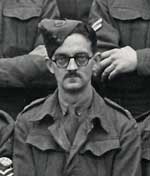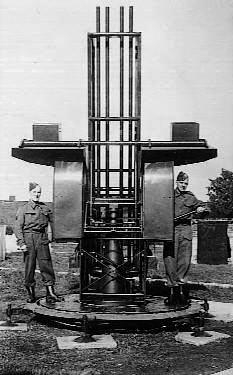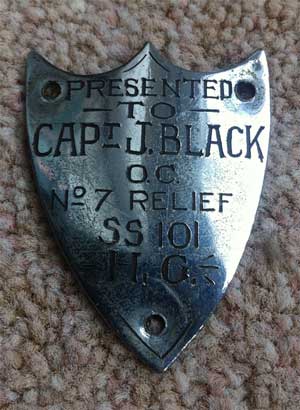JOHN BLACK AND THE HOME GUARD
Little has so far been discovered about John's early service in the Home Guard. It is likely that he was a member of the one of the several Wolverhampton battalions, the
20th - 24th Staffordshire Battalions, depending on where he lived. These would all have been involved in wholly infantry activities in the defence of their areas. But he might have served in the factory's own unit which would have been responsible for the defence of the works itself. The lot of the majority of members of these units would be to continue to serve in a similar role right up to stand-down in December 1944 - for many of them four-and-a-half years of constant, voluntary activity. But for some Home Guards life changed during 1943 as significant numbers were transferred to anti-aicraft duties. John Black was amongst these and evidence of his new role survives - one which, like that of so many Home Guards, could hardly have been more different from the office "day job".
The group image below shows the officers and NCOs of a Wolverhampton anti-aircraft
"Z" Rocket battery. One of the projectors is to be seen behind the group. It is believed that there was only one battery of this type in Wolverhampton and it was located on the
Dunstall racecourse. It was part of
25 AA Regiment, 137 (101 South Staffordshire Home Guard) AA Rocket Battery commanded by
Major Leach. Other batteries in this regiment were located in
Birmingham. The group is likely to be a sub-unit  named
No. 7 Relief and was commanded by
Captain John Black.
named
No. 7 Relief and was commanded by
Captain John Black.
 John is to be seen in the middle of the front row. Another officer has been identified with reasonable certainty.
Norman H. Shuttleworth
(right) is seated in the front row, third from the left; he was a mechanical engineer and worked in the Wolverhampton aircraft industry.
John is to be seen in the middle of the front row. Another officer has been identified with reasonable certainty.
Norman H. Shuttleworth
(right) is seated in the front row, third from the left; he was a mechanical engineer and worked in the Wolverhampton aircraft industry.
The projector shown is of the most common type: the U2P twin rail/twin rocket type. It is in an unusual location. Perhaps it is where it is stored or maintained at a local depot or even where it has been manufactured. Here
(left) is another image of these weapons at an unknown location.
Because of details of the uniform, the date of the photograph is likely to have been taken before February 1944. All of these men are likely to have been transferred from more traditional Home Guard infantry duties during 1943, in the process relieving significant numbers of regular army personnel who up until then had been solely responsible for manning such defences.

At some stage in his later service, John was presented with an unknown object as a token of appreciation by his colleagues: what it was we can only try to imagine from the single item of evidence which survives - a metal plaque which was attached to it.
After the war John Black worked in a senior position in several major companies before returning to Scotland when he retired. He died there in 1977.